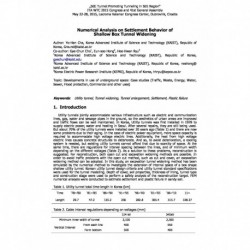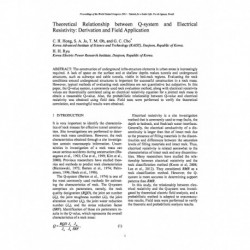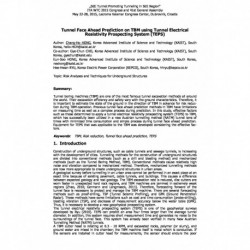No document
Search & filter
Search for a publication
Search & filter
List of products by author: H. H. Ryu
-
Estimation of Rock Mass Rating (RMR) for TBM using Electrical Resistivity
Abstract: Tunnel excavation using TBMs has many advantages but the TBM method also has some limitations that generate construction delays and increased costs when the TBM runs into problematic sections of ground. Thus, it is important to keep the TBM system safe in the case of unexpected tunnel-ahead ground conditions. To achieve this, the tunnel-ahead prediction system on the TBM needs to reduce the...
0,00 € -
Numerical Analysis on Settlement Behavior of Shallow Box Tunnel Widening
Abstract: Utility tunnels jointly accommodate various infrastructure such as electric and communication lines, gas, water and sewage pipes in the ground, so the aesthetics of urban areas are improved and traffic flows can be well maintained. In Korea, Utility tunnels was first installed in 1978 to supply electric power, water and heating in Seoul. After several repairs, they are still being used. But...
0,00 € -
Theoretical Relationship between Q-system and Electrical Resistivity: Derivation and Field Application
Abstract: The construction of underground infra-structure elements in urban areas is increasinglyrequired. A lack of space on the surface and at shallow depths makes tunnels and underground structures, such as subways and cable tunnels, viable in bed-rock regions. Evaluating the rock conditions around underground structures is important for successful construction in a rock mass. However, typical methods...
0,00 € -
Tunnel Face Ahead Prediction on TBM using Tunnel Electrical Resistivity Prospecting System (TEPS)
Abstract: Construction of underground structures, such as cable tunnels and sewage tunnels, is increasing with the development of cities. Tunnelling methods for the construction of underground structures are divided into conventional methods (such as a drill and blasting method) and mechanized methods (such as the Tunnel Boring Method, TBM). Conventional methods cause relatively high noise and vibration...
0,00 €




